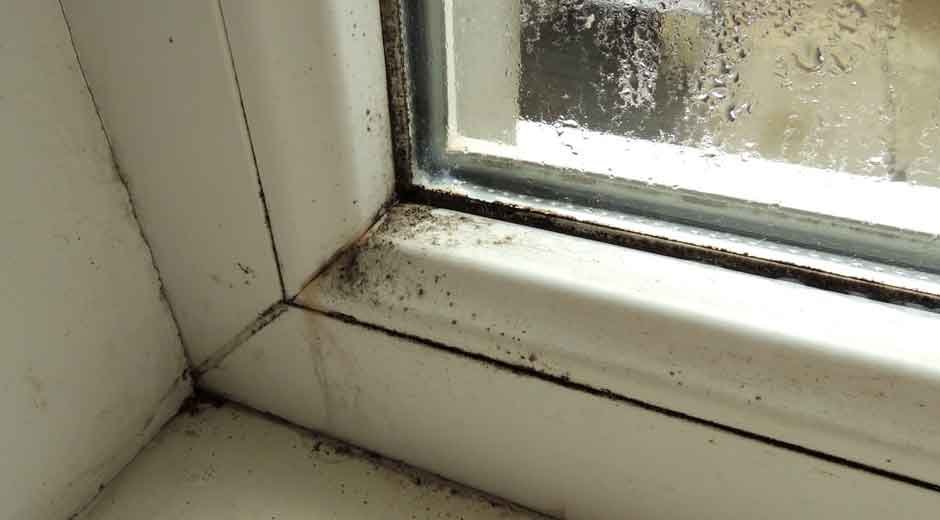Unexplained allergies, musty odors, or discoloration around windows and baseboards could be signs of hidden mold in your home. This guide helps you identify common signs, hidden hotspots, and practical steps to detect and address mold effectively.
Table of Contents
Understanding Mold and Why It’s a Problem
Mold is a type of fungus that thrives in damp, humid environments. While it plays an essential role in nature by breaking down organic materials, mold indoors is another story. When mold grows unchecked in your home, it can damage surfaces, compromise air quality, and contribute to a range of health issues including allergic reactions, respiratory problems, and even chronic headaches.
What makes mold so elusive is its ability to grow behind walls, under carpets, and in other hidden spaces where moisture lingers.
Signs Your Home Might Have Hidden Mold
Mold can be a master of disguise, but it usually leaves behind some telltale clues. Watch for these signals around your living space:
1. Persistent Musty Odor
A strong, musty smell is one of the most unmistakable indicators of hidden mold. If you consistently notice this odor in certain rooms or after heavy rain, mold growth could be lurking behind walls, under floors, or within ventilation ducts.
2. Health Symptoms That Don’t Add Up
Have you or your household members started sneezing, coughing, or experiencing headaches or congestion without a clear cause? Mold spores can trigger allergic reactions and respiratory issues, especially in those with asthma or sensitivities. If symptoms improve when you leave the house but return indoors, hidden mold could be to blame.
3. Unexplained Stains or Discoloration
Look for patches of staining on walls, ceilings, or baseboards, especially in areas prone to moisture like bathrooms, kitchens, basements, or laundry rooms. Stains may appear yellow, brown, green, or black. Peeling paint, bubbling wallpaper, or warped surfaces are also potential red flags.
4. Dampness or Moisture Problems
Mold can’t grow without moisture. Signs of persistent dampness include:
- Water stains
- Condensation on windows or walls
- Leaks under sinks, behind appliances, or around windows
- Water-damaged materials, like buckled wood, soft drywall, or musty-smelling carpets
5. Previous Water Damage
If your home has experienced a flood, roof leak, or burst pipe—even years ago—that area is at elevated risk for hidden mold. Mold can start growing within 24 to 48 hours in water-damaged spaces and often stays hidden long after the water is gone.
Where Mold Likes to Hide
Even if your home looks spotless, mold can take root in sneaky places. Here are common hideouts that deserve a closer inspection:
- Behind drywall or wallpaper
- Beneath carpets and carpet padding
- Inside HVAC systems and ducts
- Under sinks or behind kitchen cabinets
- Inside crawl spaces or under floorboards
- Around window sills and behind baseboards
- Inside attics, especially if there’s poor ventilation
How to Check for Hidden Mold
While professionals have specialized equipment, homeowners can take a few steps to uncover possible mold problems:
Inspect and Sniff
Trust your senses. Start by investigating areas with a musty smell or where you’ve seen moisture damage. Check behind furniture, inside closets, under sinks, and near windows.
Look for Moisture Sources
Trace plumbing lines for leaks. Check the attic and basement after heavy rain or snow. Run your hand along walls or floors for any signs of dampness.
Move Furniture and Roll Back Rugs
Mold loves to grow in low-traffic, undisturbed, and poorly ventilated areas. If you spot stains or mold growth, take a deeper look.
Use an At-Home Test Kit
At-home test kits are available for initial screening, but results can be unreliable. They may pick up harmless mold spores that are always present in the environment, rather than a harmful infestation. These kits are best used as an indication you should call in a professional.
Call in the Experts
If you suspect hidden mold, a professional inspection is often the safest bet. Pros use moisture meters, thermal imaging, asbestos testing, like those in Salt Lake City, and air sampling techniques to detect mold growth behind surfaces or within HVAC systems.
What To Do If You Find Mold
Found hidden mold? Don’t panic, but do act quickly:
- Address the source of moisture. Fix leaks, improve drainage, and use dehumidifiers.
- Small, accessible mold patches (under 10 square feet) can sometimes be cleaned using protective gear and specialized cleaners.
- Extensive, hidden mold or infestations in HVAC systems require professional remediation to ensure your home is safe and fully restored.
Tips to Prevent Future Mold Growth
An ounce of prevention is worth more than a pound of cure when it comes to mold:
- Use exhaust fans in kitchens and bathrooms
- Fix leaks immediately
- Keep humidity levels below 60 percent with dehumidifiers or air conditioning
- Regularly inspect at-risk areas (basements, attics, crawl spaces)
- Clean and dry water-damaged items or areas within 24 to 48 hours
Conclusion
Hidden mold can be stealthy, but with a watchful eye, you can catch the signs early and protect both your family’s health and your property. Don’t ignore musty odors or unexplained allergy symptoms. By staying vigilant and proactive, you’ll create a safer and healthier living space.
